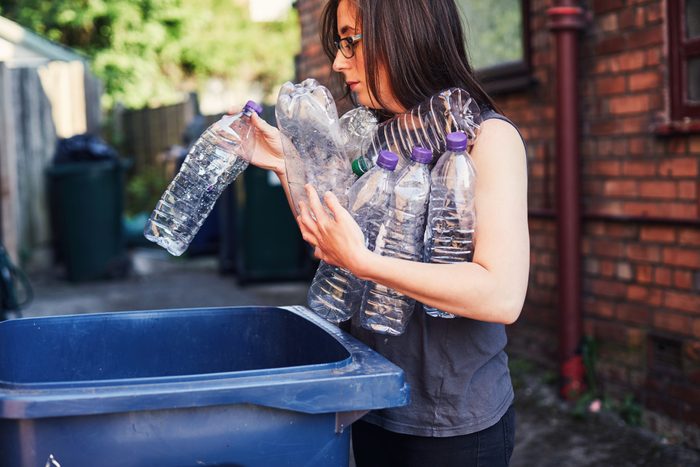Does Recycling Work? For Plastic, Studies Suggest It’s a Myth
Updated: Jan. 05, 2023

Plastic waste is a growing problem, as studies question whether recycling really works at all
On trash night in America, recycling is a standard ritual, as common as saying the Pledge of Allegiance or standing for the national anthem. Everyone knows to sort their cardboard, glass, paper and plastics for recycling collection. But a new study by Greenpeace, and reporting in the Boston Globe, suggests that recycling plastic is a “myth” and raises a major question about the future: does recycling work?
Is recycling plastics a “myth”?
Paper, cardboard, metal and glass—recycled the right way—are still relatively effective. But when it comes to recycling plastics, the short answer is “not really.”
The plastic recycling rate in the United States is estimated to have declined to about 5% to 6% in 2021, down from a high of 9.5% in 2014 and 8.7% in 2018. But even those earlier numbers are accurate. During those years, according to Greenpeace, we exported millions of tons of plastic waste to China—and counted it as recycled—even though much of it was burned or dumped.
An op-ed earlier this year in the The Atlantic insisted that plastic recycling “doesn’t work and never will.” According to The Atlantic, “the problem lies not with the concept or process of recycling but with the plastic material itself—it is plastic recycling that does not work.”
Why doesn’t plastic recycling work?
There’s been a lot of debate over what really happens to recycled plastic. But scientists say that recycling plastic waste has mostly failed because it’s very difficult to collect and nearly impossible to sort. Because plastic is often made from or contaminated by toxic materials, it can be harmful to the environment to reprocess. Finally, there’s little economic benefit to recycling plastic.
Plastic recycling, in particular, has failed because the thousands of types of synthetic plastic materials produced are fundamentally not recyclable, according to Greenpeace.
According to the Organization for Economic Co-operation and Development (OECD) half of the world’s plastic waste ends up in a landfill, 19% incinerated, and another 22% evades waste management systems and goes into uncontrolled dumpsites.
How big of a problem are plastic waste and pollution?
The United States Department of Energy estimated, in 2019, that the volume of plastic waste in the United States rose to 44 million metric tons, about 295 pounds per person. Meanwhile, a recent report from OECD projects that global plastic waste will nearly triple by 2060. Meager recycling efforts cannot keep up with this pressure, and global plastic pollution will double during this time period. Plastic production and disposal account for three to four of global greenhouse gas emissions.
What can we do about plastic waste?
Much of the solution falls on big companies to change the way they do business. The way forward seems to be mostly to cut down on companies’ reliance on plastic packaging, and to move toward reusable packaging and packaging-free alternatives. Above all, companies need to phase out all single-use plastics.
For the consumer, living more plastic-free is the only real solution available. Avoiding drinks in plastic containers, using a travel mug or reusable water bottle, bringing your own reusable bag, buying in bulk and cutting back on pre-packaged foods are all a good start.
But in the end, corporate America needs a deeper commitment to the plastic waste problem. “Companies must take action now to eliminate single-use plastics and packaging and not rely on false solutions such as recycling,” says Greenpeace.
Sources:


